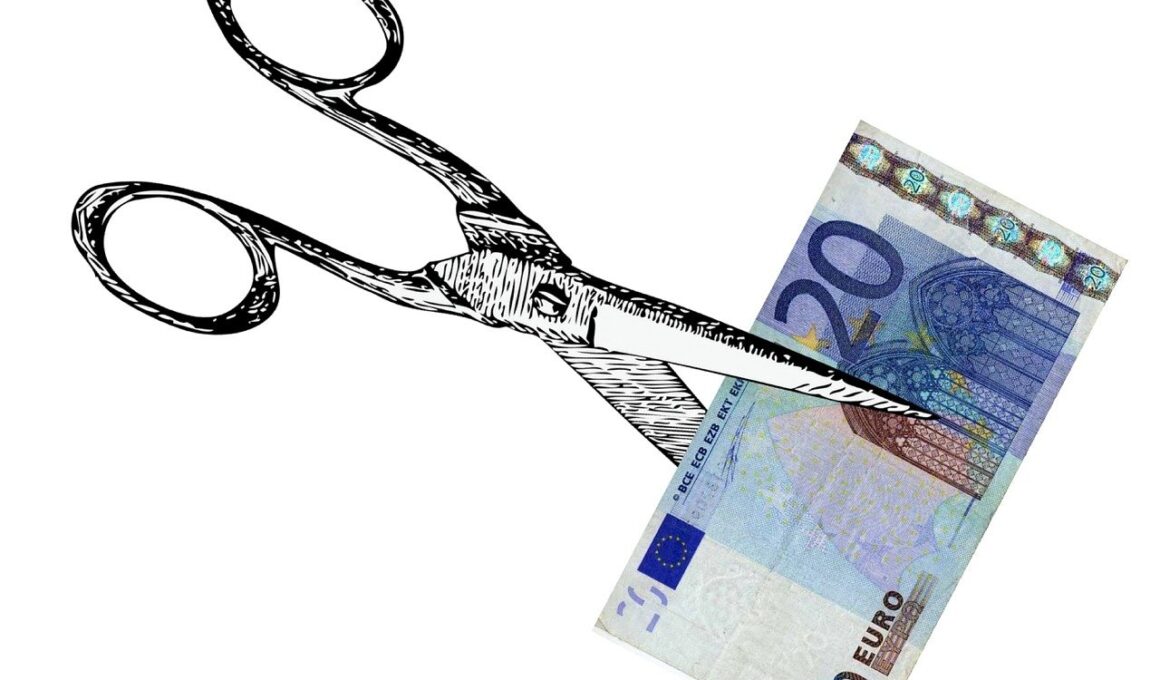Evaluating Campaign Budget ROI through Marketing Analytics
Marketing analytics has revolutionized how businesses evaluate the return on investment (ROI) of their campaign budgets. By leveraging advanced data analytics tools, businesses can gain insights into customer behaviors, preferences, and engagement levels. These insights are essential for optimizing marketing budgets effectively. Companies can pinpoint which campaigns yield the best results and where to allocate resources. Furthermore, measuring ROI allows marketers to justify expenses and demonstrate the value of their efforts to stakeholders. By implementing metrics such as cost per acquisition (CPA) and customer lifetime value (CLV), organizations can create a clearer picture of their financial commitment. Adjustments can be made based on performance data, ensuring that every dollar spent is working effectively. Additionally, data visualization tools make complex information more digestible, allowing teams to make quick informed decisions. Other factors play a role, as external economic conditions and competitive landscape impact campaign performance. Therefore, continuous monitoring and adaptation are essential in today’s rapidly changing market environment. The marriage of analytics and budgeting ultimately leads to more strategic decisions and higher success rates for marketing initiatives across varied industries.
Evaluating campaign performance is crucial for understanding how budget allocations impact overall marketing success. Using analytics, marketers can dissect the effectiveness of individual channels and campaigns to uncover valuable insights. Evaluating metrics such as click-through rates, conversion rates, and customer engagement provides a clearer picture of what resonates with audiences. Analytics allows teams to quickly pivot based on real-time data, ensuring that their budgets are allocated effectively. Additionally, segmentation of audiences based on demographics, behaviors, and purchasing patterns can yield personalized marketing strategies. This leads to optimized use of resources, as tailored messages drive better results. Instead of a one-size-fits-all approach, targeted campaigns can be developed that address specific segments’ needs and preferences. The result is often a higher ROI, as marketing efforts become more focused and relevant. Collaboration between departments is essential in this process; sales and marketing teams must align on goals and share data-driven insights for maximum effectiveness. As customer preferences evolve, ongoing analysis is key to staying ahead of market trends and adjusting budgets accordingly. This adaptability can lead to greater competitive advantages and overall business growth.
Key Metrics for Campaign Budget Optimization
When it comes to campaign budget optimization, certain key metrics help guide decision-making processes effectively. Understanding these metrics is vital for assessing the effectiveness of marketing strategies. One crucial metric is the return on advertising spend (ROAS), which measures the revenue generated for every dollar spent on advertising. This metric enables businesses to determine whether their campaigns are financially viable. Furthermore, tracking customer acquisition cost (CAC) ensures that marketing efforts are not exceeding acceptable limits for attracting new customers. Another important metric to monitor is the marketing qualified leads (MQLs) generated from campaigns, as this indicates the effectiveness of lead nurturing strategies. Furthermore, analyzing conversion rates across different platforms can identify which channels deliver the best results, allowing reallocations for improved efficiency. By integrating these metrics into a comprehensive dashboard, marketing teams can identify trends and patterns. These insights ultimately inform adjustments to budgeting and campaign strategies and lead to data-driven decisions that enhance overall performance and outcomes. Additionally, benchmarking against competitors can provide valuable context, improving both strategy and execution within a dynamic marketplace.
The role that predictive analytics play in campaign budget optimization cannot be overstated. By utilizing historical data, businesses can forecast future performance more accurately. This predictive approach equips marketers with the foresight needed to allocate their budgets effectively while anticipating market shifts and seasonal changes. Moreover, these insights allow for the identification of potential risks, enabling marketers to craft contingency plans for minimizing losses if expectations are not met. Advanced machine learning algorithms enhance predictive capabilities beyond traditional analytics methodologies. They can analyze vast datasets and provide actionable insights in ways that human interpretation cannot match. Additionally, the adoption of A/B testing can significantly enhance campaign effectiveness; it allows marketers to experiment with different approaches and measure outcomes directly. By optimizing campaigns continuously based on these predictions, marketers can ensure that resources are efficiently utilized, making every penny count in a competitive landscape. Such adaptability fosters a culture of continuous improvement and innovation, essential for thriving in fast-paced industries. Ultimately, successful marketers embrace data-driven strategies that empower them to make quicker, well-informed decisions that lead to financial success.
Budget Allocation Strategies
Effective budget allocation strategies are essential in maximizing the ROI of marketing campaigns. Companies should consider implementing a funnel-based approach to allocating budgets, where investments are made according to the stage of the customer journey. This allows for appropriate spending based on potential impacts at different touchpoints, such as awareness, consideration, and decision-making. By analyzing past performances, businesses can determine which marketing channels yield the highest returns at various stages. Moreover, allocating budget flexibility ensures that teams can shift resources quickly in response to real-time data and changing market dynamics. Additionally, utilizing tiered budgeting can help organizations prioritize high-impact initiatives while maintaining room for diverse strategies. Another viable approach involves employing a zero-based budgeting method, where every expense must be justified, rather than starting from previous budgets. This encourages a thorough evaluation of all marketing initiatives and ensures that finances are allocated to only the most effective strategies. Combining various budget allocation strategies enables companies to optimize their campaigns continuously, enhancing their overall ROI while also driving deeper customer engagement and satisfaction.
The importance of integrating marketing analytics tools into budget optimization cannot be overlooked. These tools provide real-time insights that help in the decision-making process. Advanced analytics platforms offer dashboards that visualize data patterns, enabling teams to identify trends more quickly and effectively. Data integration from various sources, such as social media, email campaigns, and sales activities, allows for a holistic view of performance and spending. Moreover, the utilization of artificial intelligence further enhances the analytical capabilities provided by these tools, leading to smarter budget allocations. AI-driven insights, like predicting campaign outcomes and customer behaviors, equip marketers with the ammunition to make informed strategic decisions. Furthermore, setting up alerts and triggers in these systems can guide teams proactively when certain thresholds are reached, ensuring that budgets are not overspent. The seamless collaboration made possible by these tools unifies various departments, enabling marketers to work hand in hand with finance and analytics teams. Ultimately, the end goal is to create a responsive marketing strategy that is agile and rooted in data, ultimately driving up ROI and enriching the customer experience.
Conclusion: The Future of Campaign Budget Optimization
Looking ahead, the landscape of campaign budget optimization will continue to evolve, driven by technological advances in marketing analytics. As businesses increasingly adopt more sophisticated tools, they will be able to leverage predictive analytics and automation features to refine their budgeting strategies continuously. Enhanced capacity in handling big data will empower companies to make quicker decisions and adapt more readily to changing market conditions. Collaboration among cross-functional teams will also deepen as insights derived from analytics become ingrained in organizational practices. Furthermore, the growing emphasis on sustainability and ethical marketing practices will likely influence budget allocation as companies work towards creating more responsible and impactful campaigns. In summary, the convergence of marketing strategies with data analytics sets the stage for significant advancements in budget optimization. This will ultimately translate into enhanced customer experiences and more substantial returns on marketing investments. Consequently, businesses that embrace these changes are poised to outperform competitors in an increasingly competitive market. The intersection of art and science in marketing through analytics is a promising frontier for organizations eager to grow and succeed.
Overall, evaluating campaign budget ROI through marketing analytics enables organizations to make informed decisions. By focusing on key metrics, leveraging predictive analytics, implementing effective budget allocation strategies, and integrating advanced marketing analytics tools, organizations can enhance their campaign effectiveness. Continuous analysis and adaptation are essential, ensuring that marketing resources are optimized to meet evolving consumer needs and market trends. Building a data-driven culture will facilitate greater collaboration and communication across departments, enhancing overall organizational efficiency. As marketing continues to transform in the digital age, embracing these practices will set organizations apart and contribute to their long-term success.


